This group includes very large stone pipes that are most often found in the context of Mississippian ceremonial centers. The majority of these examples are made of stone including claystone and steatite, but a few are made of clay. The symbolism of these large pipes relates to the Southern Ceremonial Complex; however, like many pipe forms, some relate to subsistence and daily life activities.
The “Bird of Prey” pipes are striking in their appearance, but also in their significance in the Southeast. The only example of this pipe that can be seen publicly is at the Ocmulgee National Monument in Macon Georgia. Two of these pipes were recovered during the WPA excavation of the site. One example came from Mound B and was impacted by the construction of a railroad through the site in the 1840’s. The pipe that is on display (far left) was recovered from the foot of the Lesser Temple Mound along the southern side of the park road that follows the old 1840 railroad. Both of the Ocmulgee examples are fully drilled to be smoked. These pipes belong to the Early Mississippian culture that built the mounds and the counsel house. Timbers of the counsel house dated from its construction in 1012 A.D. to its destruction in 1264 A.D. The center of the counsel house is filled with this same effigy carved into the clay with several rows of seating and black drink vessels also carved in the clay around the effigy. At the head of the effigy is a central platform, perhaps for the elite members of the counsel. A second example of this kind of pipe was recovered by R.D. Ewton in 1965 in a plowed field in Rhea County, Tennessee (left center). The find was reported by Steven Cooper in volume 58, No.1 of the Central States journal. The archaeological context of this find was lost through plowing, but Cooper discovered another similar example pictured in the works of George West, Tobacco, Pipes and Smoking Customs of the American Indian.The pipe (center right) is now in the collections of the Museum of the American Indian.It is made of sandstone and measures 10.5 inches in length.This pipe was originally collected by H.H. Ward in Kentucky.A forth example of this pipe form was published in the 1970 (Vol.17, No.3).That example was from a Mississippian site along the Harpeth River in Davidson County, Tennessee (far right).The pipe was 4.5 inches long.Interestingly, only the Ocmulgee pipes were drilled for smoking.
One variation of the Bird of Prey pipe was recovered by C.B. Moore at the Moundville site along the Warrior River in Alabama. The eagle in this pipe is represented as dead with the feet up and the mouth open at the side. The pipe, made of white limestone at a length of 4.6 inches, was recovered in mound D between the burials of two children.

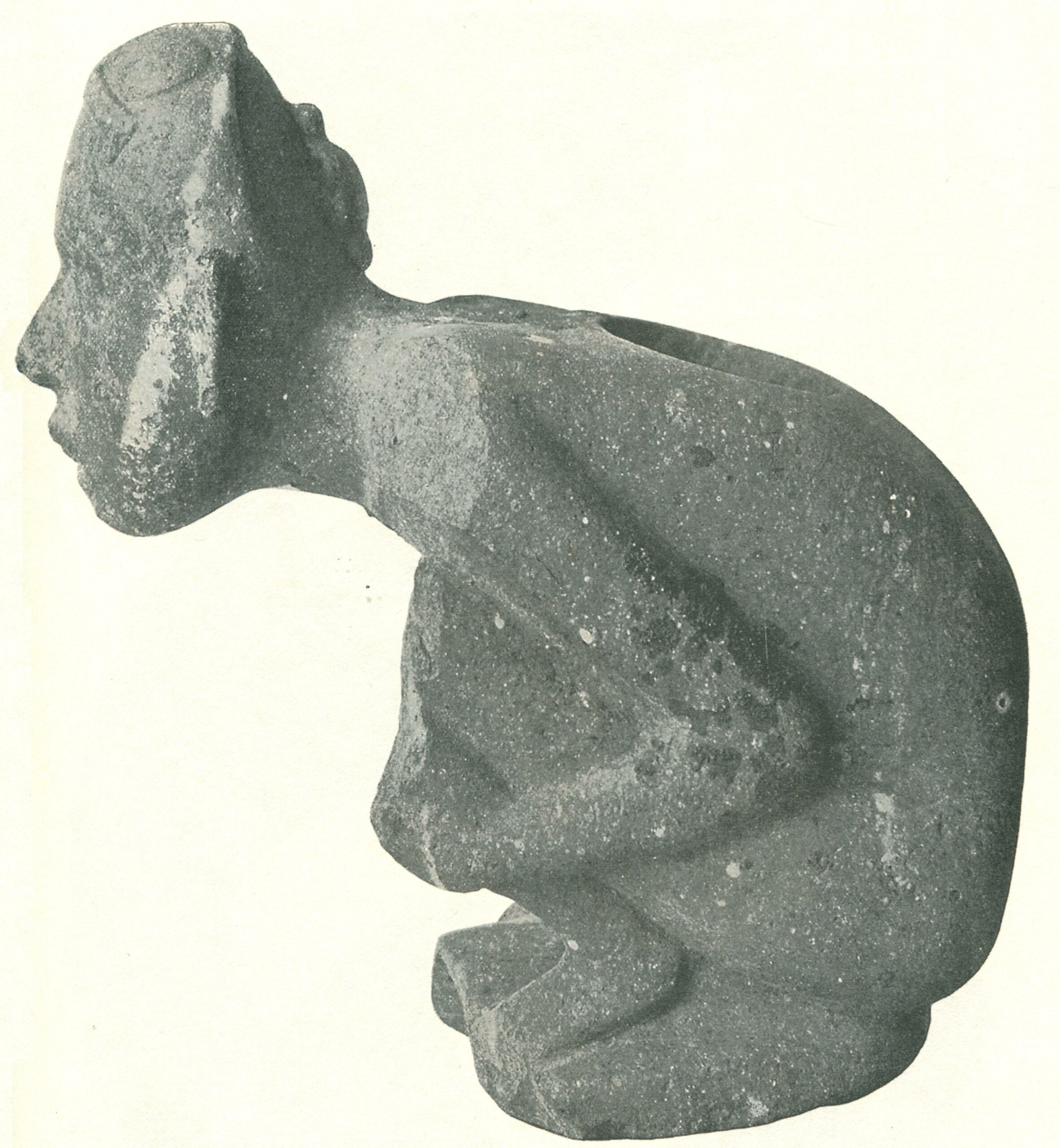
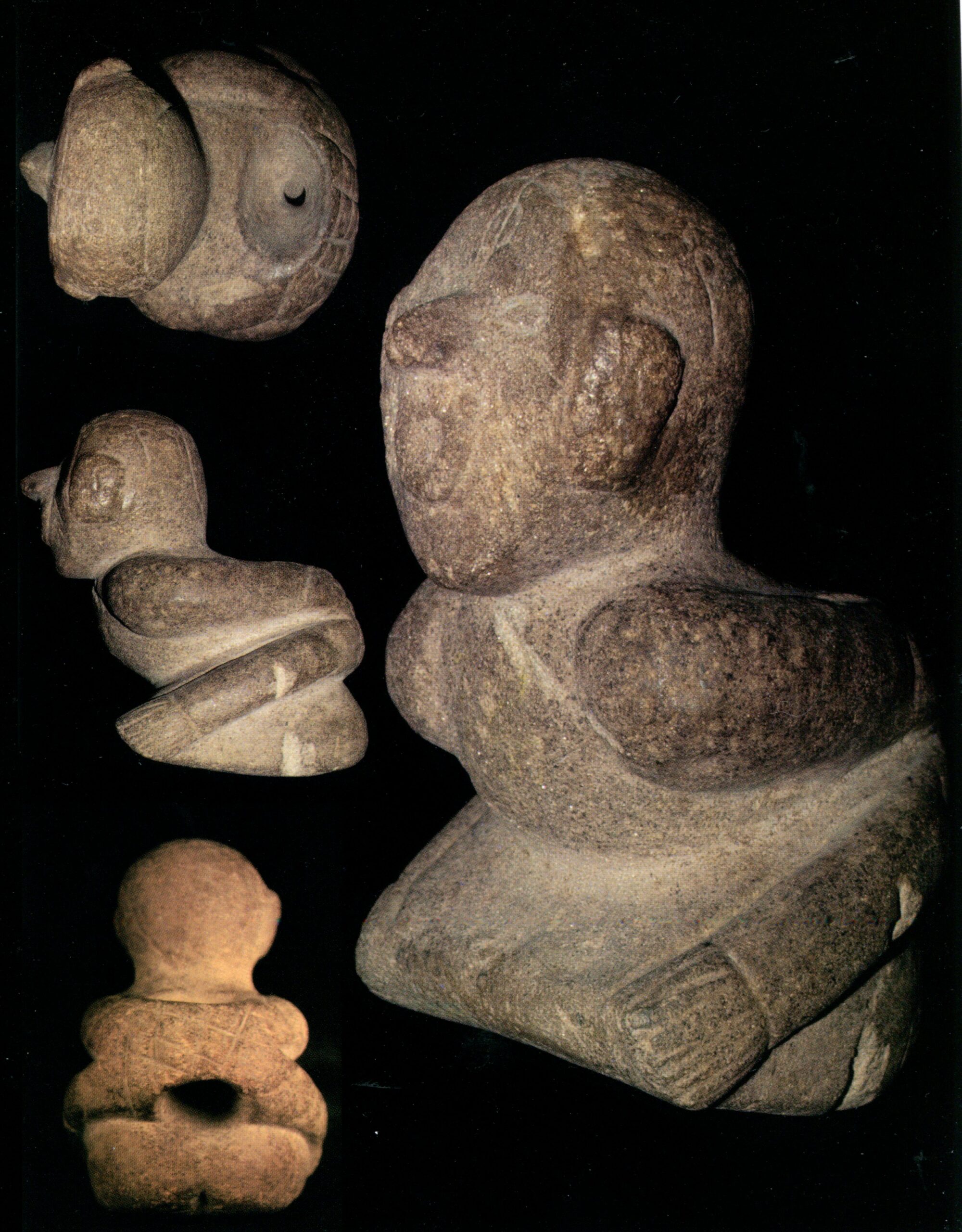
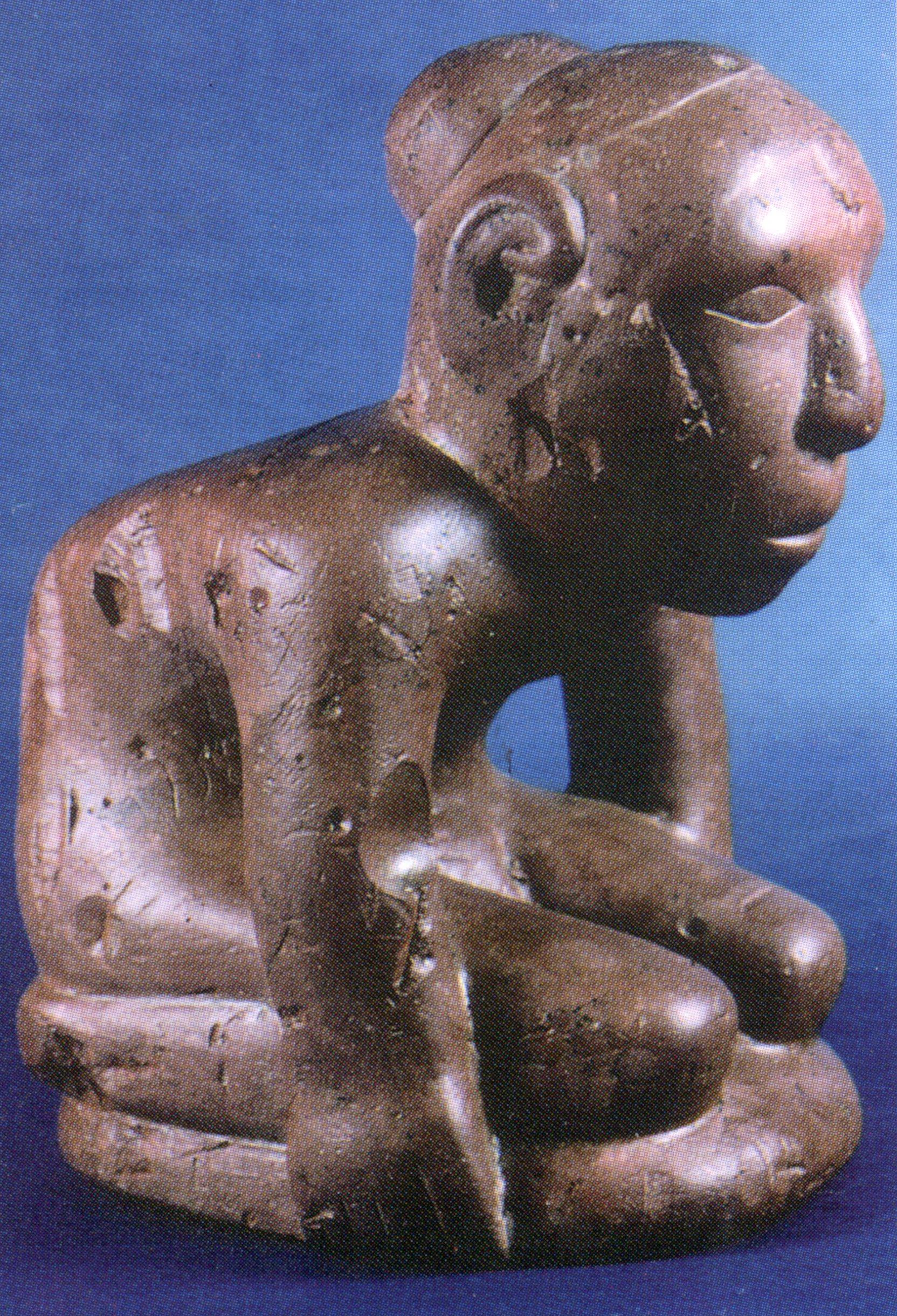
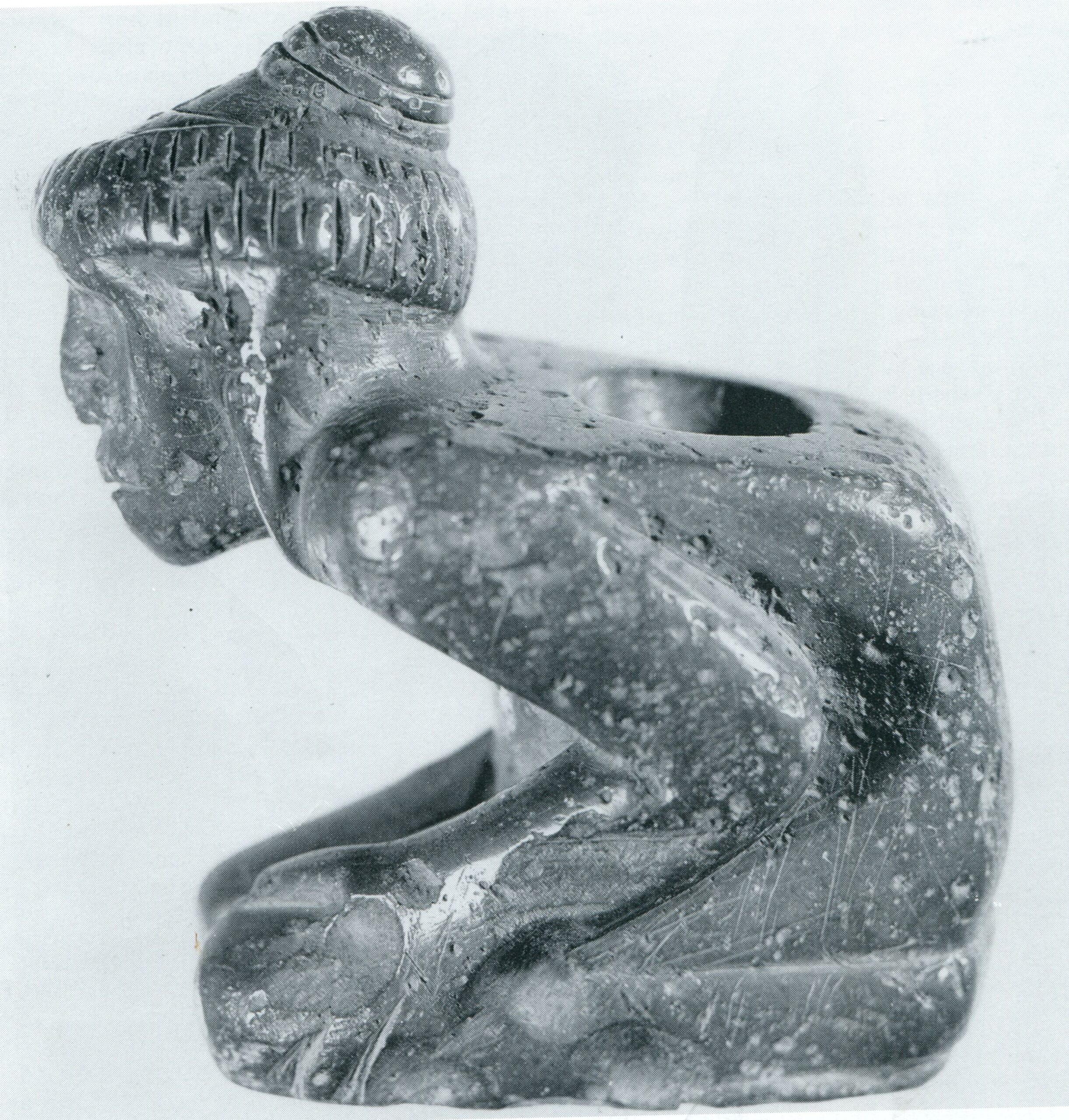
The human effigy pipes pictured above are all from the Southeastern states, Kentucky being the most northern state of recovery.Pipes A was recovered while digging a ditch through the Moundville site during the middle 1800’s. The figure has a somber expression and is embracing the pipe bowl. It was recorded by C.B. Moore together with pipe B that was recovered by Moore from mound C of the mound complex.This pipe is made of soft, red claystone and stands 8 inches tall.Both of these examples are clearly part of the Middle Mississippian period culture dating between 1200 and 1400 A.D.Pipe C was recovered from the Mississippian period Tolu site in 1918 while plowing a field immediately next to the Ohio River.The site is located near the town of Tolu in Crittenden County, Kentucky.The individual appears to be bound at the arms and in pain.The pipe is made of sandstone and is 8 inches high.Pipe D was recovered by Mr. Ronnie Haney from the Twin Mounds site in Ballard County, Kentucky.The pipe is made from flint clay, common to many of the highly artistic pipes found near Cahokia, suggesting a Mississippian association, probably dating between 1050 and 1150 A.D., for the pipe.The 7 ¼ inch figure is kneeling with arms to its side and feet tucked at the back.Again, the figure has a somber expression.Pipe E was recovered from a mound in Kingston, Tennessee by J.W. Dunning and was recorded by the Smithsonian Institution in 1897.The pipe is 6 inches high and no record of its cultural affiliation has remained, but it appears to be Mississippian in appearance.It is interesting that all of these figures belong to the same Mississippian period and that all are kneeling or crouching, possibly alluding to the communication that was associated with pipe usage.

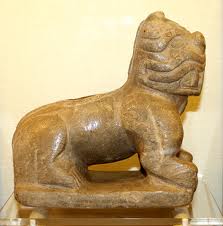
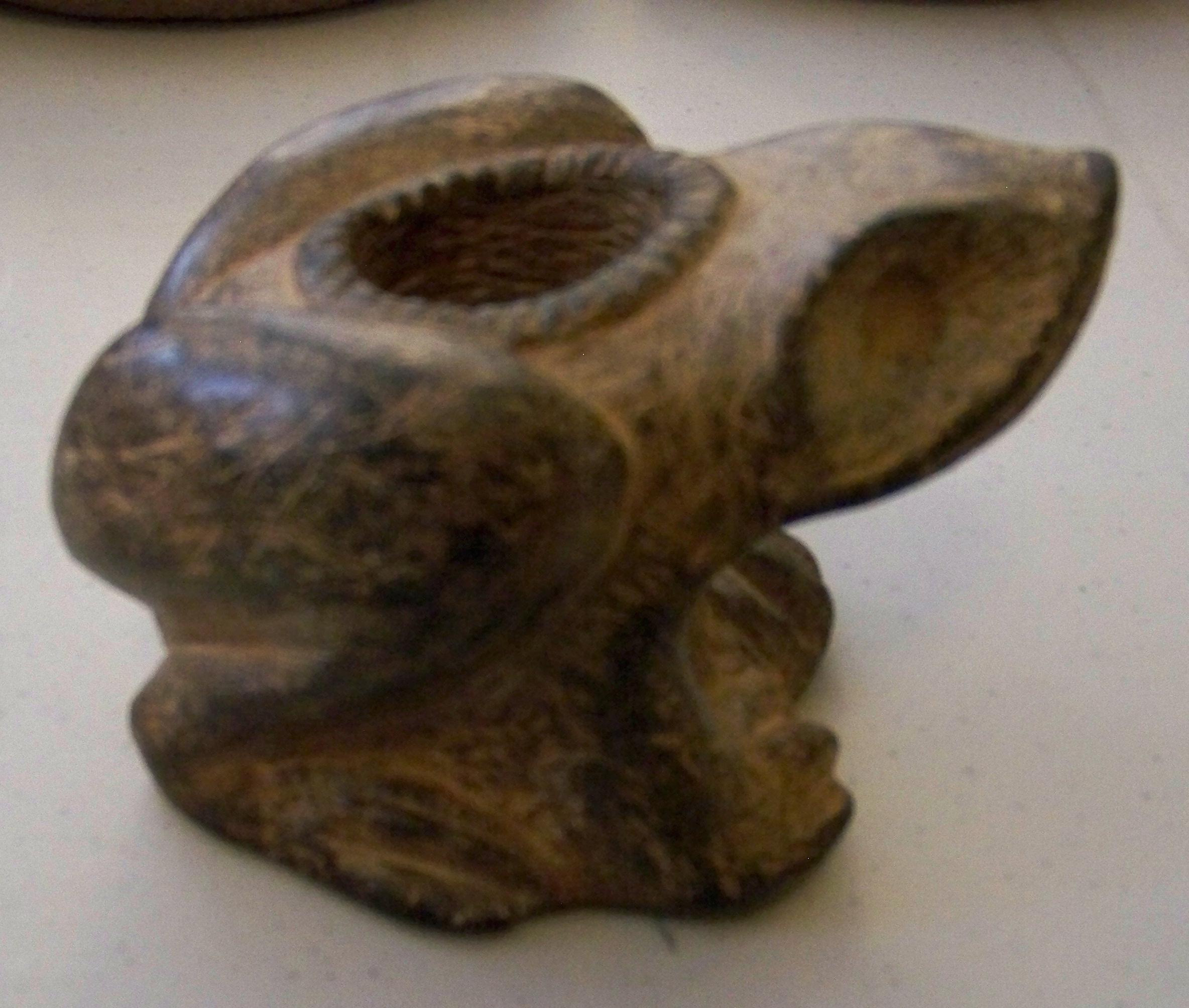
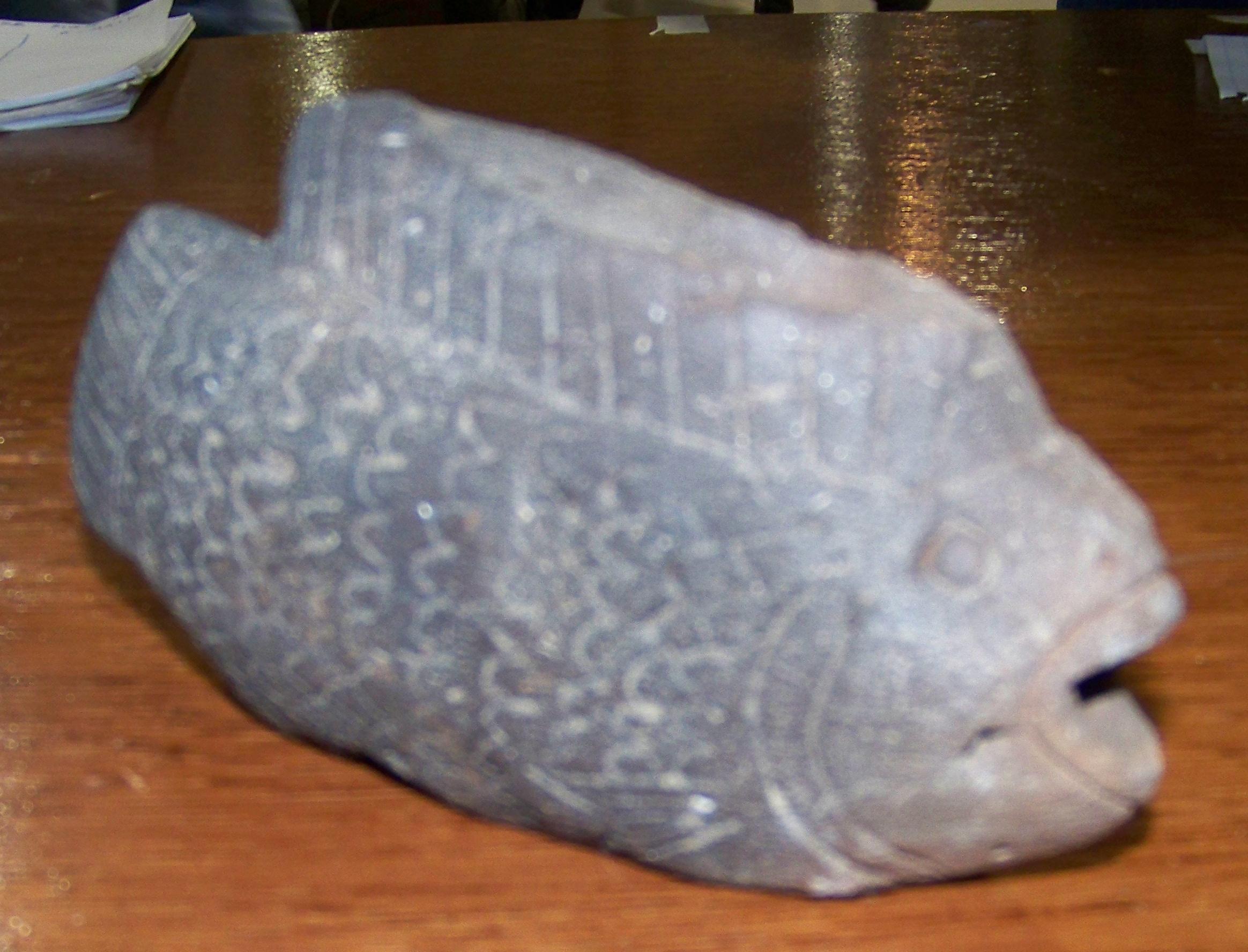
Animal effigy pipes represent both ceremonial and subsistence subjects and both are striking in their appearance. Pipe F (a Late Mississippian pipe) was recovered from a Lee County site along Kinchafoonee Creek in west central Georgia and is made of shell-tempered pottery. Pipe G is a well known cat effigy from the Moundville, Alabama site. The beautiful frog effigy pipe is ceramic and stands about 4 inches tall. It may represent some of the very large frogs, some well over a foot long, that I have personally seen in central Tennessee where this pipe was recovered. Pipe I came to us in an artifact ID day and is from central Tennessee. Whether human or animal, stone or clay, all of these large effigy pipes seem to belong to the Middle Mississippian period.